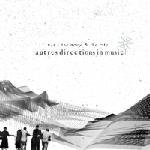
Various Artists (Autres Directions) The Noise & the City
(Autres Directions in Music)
A brilliant concept album this. Autres Directions in Music asked 30 artists involved in varying branches of computer and electronic music from around the world to record a track each using solely found and recorded sounds from a city of their choice. The result is a mixture of cutting edge electronic music and a fascinating essay on modern urban life.
The experiment itself is worthy of comment. The modern city is a space in which we are constantly exposed to messages and electronic communication. TV screens, information systems, new advertising technology, billboards, all mean that the city dweller is constantly receiving and interpreting creative information. What is curious though, is that much of this information takes us away from our surroundings themselves and asks us to project ourselves into a virtual space behind and above the city. I say above, because much of the information is advertising and thus the implication is that there is an aspirational world that is better than the one we are immediately in contact with. The result of this is a reduction in contact and interaction with the city itself, and increased contact with the virtual and improved city offered by consumption. We are much less part of the city itself that, say, Baudelaire's flaneur or the SoHo residents of Marshall Bermann's All That Is Solid Melts Into Air.
This album then reverses such a trend in the modern city. One of the most distinctive features of urban life is noise. However, it is noise experienced as silence, in the same way that once in the country the urbanite is assailed by quietness that seems to be a form of noise. We hear so much of the city that we hear nothing at all. Here noise as silence becomes the starting point for a reflection on the beauty and art of modern distopia; the city becomes a living being with its own biological rhythms - a supra-natural city, as it were, or the city as hive, like Camilo José Cela's post-civil war Madrid in The Hive. As in the Heideggerian notion of care, the noise and static make us look for tunes and harmony, much as the viewer of Terence Mallick's Thin Red Line is forced to look for beauty amidst war.
At times this album is harsh and abrasive, sounding like something by the Scratch Perverts. But this is never experiment for experiment's sake. Even amongst more brutal industrial soundscapes, there are moments of great beauty and more contemplative tracks. Better still is that the format takes us around the world - Diego Morales' haunting Santiago de Chile, Buenos Aires as post-capitalist breakdown in the piece by Pable Reche, or Mitchell Akiyama's Canadian white noise post-music, for example.
Throw in the fact that this is free to download and that it includes mini photo-essays on all the pieces, as well as various other arty CD-Rom extras, this is without doubt an unmissable slice of genius.
14 February, 2005 - 00:00 — Ben Bollig